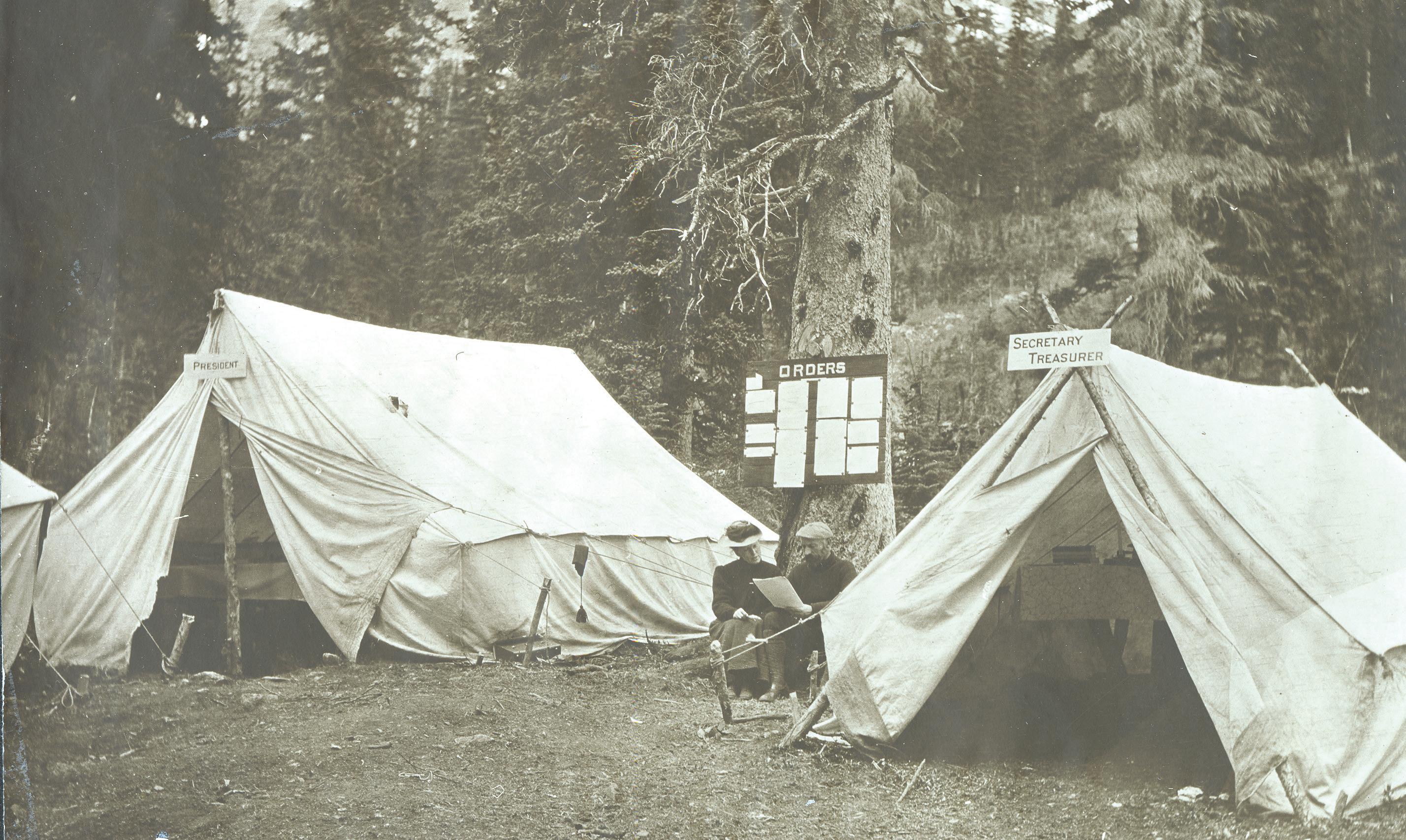
3 minute read
Elizabeth Parker: A Passion for the Alpine
Visitors to Canada’s Rocky Mountain National Parks quickly realize what a treasure they are. But in the early days, it took passionate advocates to create and sustain the parks we know today, people like Kootenai Brown in Waterton, and Elizabeth Parker in…Winnipeg?
Advertisement
Yes, an eastern prairie girl was instrumental in developing the ethos of protection of our mountain heritage.
Born in Nova Scotia, Elizabeth Parker married young, moved west, and became a daily editorial writer at what is now The Winnipeg Free Press. When the head of the American Alpine Club suggested forming a Canadian chapter, Parker had none of it! She advocated fiercely for an independent Canadian club, helped organize the first meeting thereof in 1906, and became its first secretary. All this at a time when women were not exactly welcomed at most of the world’s alpine clubs.

“Alpine Club summer camp in the Rockies, 1907.” (Pres. A.O. Wheeler and Sec.Treasurer Elizabeth Parker)
Courtesy of Whyte Museum of the Canadian Rockies.
The very next year, in the first article of the Canadian Alpine Journal, Parker declared the club’s ideal. She wrote, “By virtue of its constitution, the Alpine Club is a national trust for the defense of our mountain solitudes against the intrusion of steam and electricity and all the vandalisms of this luxurious utilitarian age; for keeping free from the grind of commerce, the wooded passes and valleys and alplands of the wilderness. It is the people’s right to have primitive access to the remote places of safest retreat from the fever and the fret of the market place and the beaten tracks of life.”
Talk about passion!
While not a mountain climber herself, Elizabeth Parker was comfortable in the mountains, and enjoyed visiting many times. Today, visitors can still experience the amazing value of a ‘retreat from the fever and fret!’ at the Elizabeth Parker Hut in Yoho National Park, one of 34 such facilities run by the Alpine Club of Canada.
In 2012, Parker was recognized by Parks Canada as a person who helped shape Canadian culture, history, and identity.

Elizabeth Parker backcountry hut
Photo by Tanya Koob, courtesy of Alpine Club of Canada.
Visiting the high country
If you are a true outdoorsman, or woman, you probably already know about the Alpine Club of Canada’s network of 34 remote cabins and huts sprinkled among amazing mountain ranges, glaciers and high passes.
But let’s face it - most of us aren’t regular visitors to the peaks of mountains, preferring to see the magnificent backcountry through a vehicle window, or from a ski lift or a gondola. But if, just once in your life, you want to truly get away from it all, or experience the alpen-glow off a mountain peak at sunrise, or see a glacier from under the light of the moon with no other living soul in sight, then maybe it’s time to begin planning a visit to one of these gems.
And it will take some planning!
The club’s most popular site is the Elizabeth Parker Hut built in 1919 at the gorgeous Lake O’Hara. Yes, THAT Lake O’Hara – the one you’ve been ogling in tourism shots for decades! But to book a few nights in this gem, plan at least a year in advance, and even then you have to enter a lottery in the fall to even have a shot to bag this prize for the next summer.

For most huts, though, it’s a simpler matter. To pick your destination visit alpineclubofcanada.ca, then call 403-678-3200 ext. 0 to make a reservation. You do not have to be a member, but by joining the club you can book a year in advance, versus 30 days for the public. Probably worth joining, especially for a family.
Next you’re going to need appropriate gear, like a nice warm sleeping bag, solid hiking boots (don’t even think about trying this in running shoes), and some hi-energy lightweight food options. And the usuals like sunscreen and lip balm and blister cream. Lastly, you’ll want to be in decent shape, be comfortable in the wilderness, and ready for a serious hike, if not downright rock-climbing or glacier traversing to get to the hut in the first place.
If all of that sounds a little bit overwhelming, the club offers camps and training courses designed to make the whole thing more manageable, whether you just want to visit a hut safely, or want to learn how to climb all those mountains you are looking at! Options can be found under the ‘Adventures’ tab on their website. “One of the reasons we exist,” says the club’s K. Haberl, “is that we want to expose people to the mountains. Because once people go there, they want to protect it!”
By: Allen Gibson










